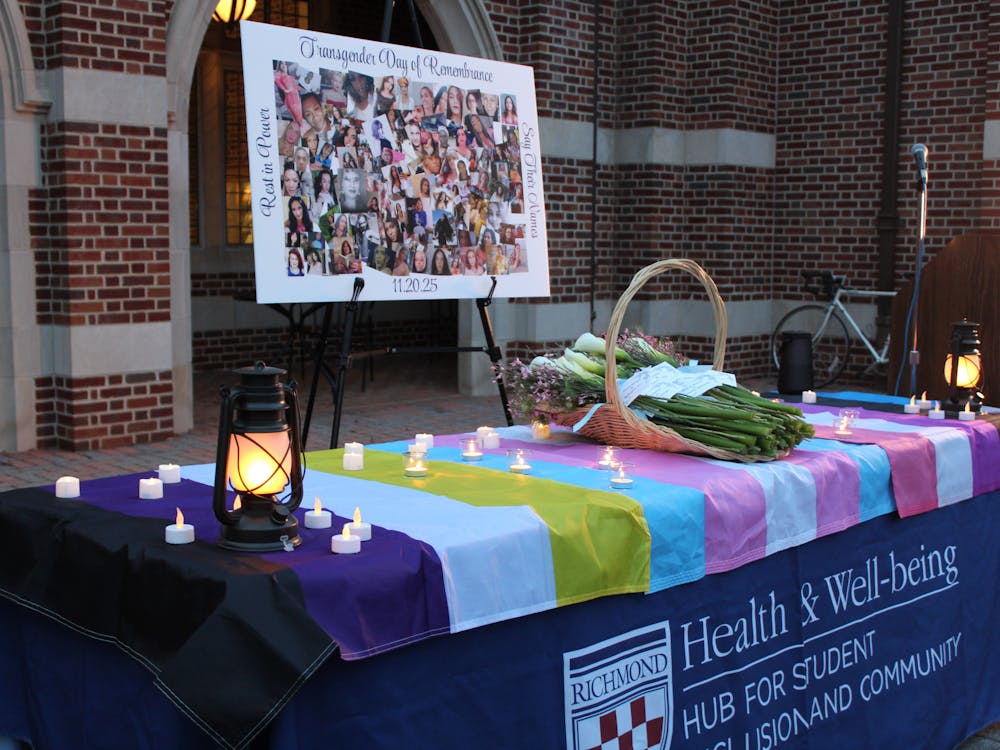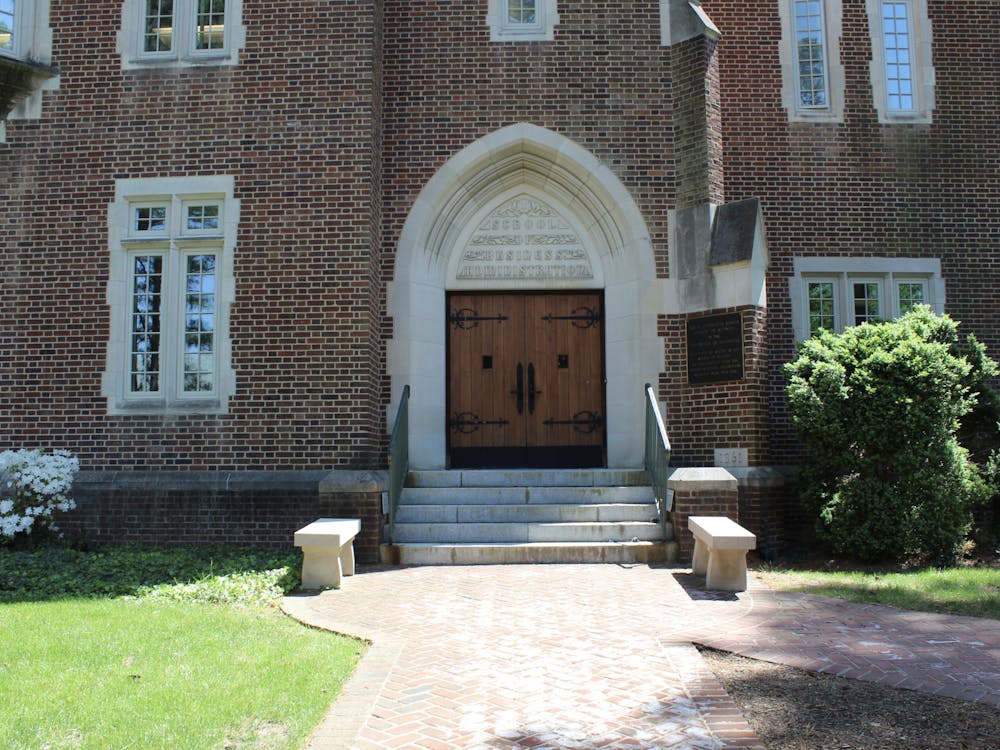Stephen Addiss, a recently retired professor who taught art history for 20 years at University of Richmond, recently opened an exhibition called "No Eye Flowers: Paintings, Calligraphy, and Ceramics" in the Joel and Lila Harnett Museum of Art in the Modlin Center for the Arts.
Richard Waller, executive director of University Museums, curated the exhibition, which contains ink paintings, ceramic art and one sculpture.
The pieces cover a large time frame, from 1970 to about three or four weeks ago, Waller said. He said although an exhibition such as this one would normally be organized chronologically, it was organized so as to let the works resonate with one another. Waller gave the example of the paintings "Horse" and "Flying" as "talking to each other" in that they are placed across from each other in the room.
Both Addiss and Waller said their favorite piece in the exhibition was "Red Circle" because of how dramatic the piece was. Addiss said: "It has a lot of spontaneity. ... The really mysterious part is that red circle because I don't know why I did it. It's related to some of the zen circles, although I didn't know that at the time."
The ink that was used for the red circle is a special kind of ink from Japan, which he applied by squeezing a bottle of the ink in a little circle, he said.
Addiss said in recent years he had become more interested in haiku paintings called haiga. There are six haiga paintings in the exhibit. Addiss wanted his paintings to have the same basic idea as the haikus, but not necessarily to illustrate them, he said.
In 1995, Addiss curated an exhibition on Haiga, "Haiga: Takebe Socho and the Haiku-Painting Tradition," Waller said in a forward to the exhibition. "People don't know much about it, but it's catching on," he said.
The ceramics in the exhibition include a number of teacups and bowls. "With ceramics, you have to work with other people. It can become more of a cooperative project, which is fun," Addiss said.
Waller said the calligraphy paintings were interesting, because although they might seem abstract to the viewer, they could be read if the viewer knew Chinese characters.
The exhibition features a meditation room that contains the piece "Large Enso," Waller said. "We kind of wanted to highlight that Asian way of thinking about work." Addiss said Zen Enso was the bedrock of ink painting, and there were infinite possible variations on it.
"I'm really delighted with the presentation," Addiss said. "The museum and staff have done a terrific job."
The exhibition will run until May 30, 2014, according to the website.
Enjoy what you're reading?
Signup for our newsletter
Contact Collegian Reporter Brennen Lutz at brennen.lutz@richmond.edu
Support independent student media
You can make a tax-deductible donation by clicking the button below, which takes you to our secure PayPal account. The page is set up to receive contributions in whatever amount you designate. We look forward to using the money we raise to further our mission of providing honest and accurate information to students, faculty, staff, alumni and others in the general public.
Donate Now


